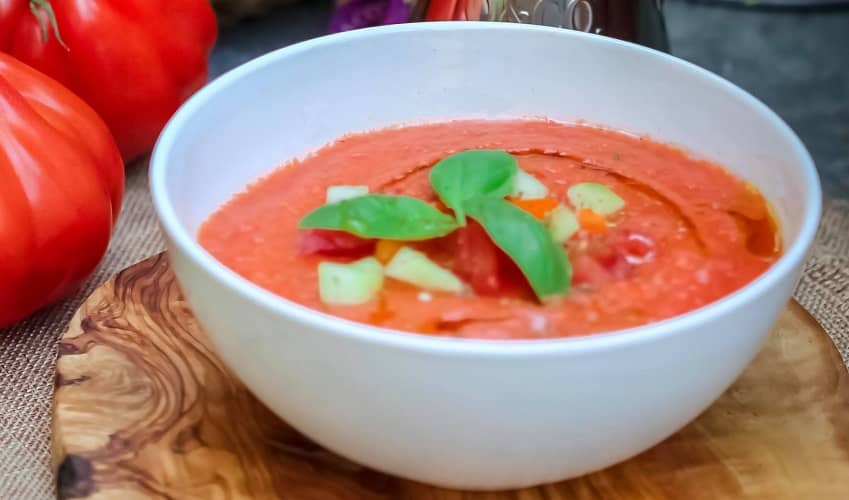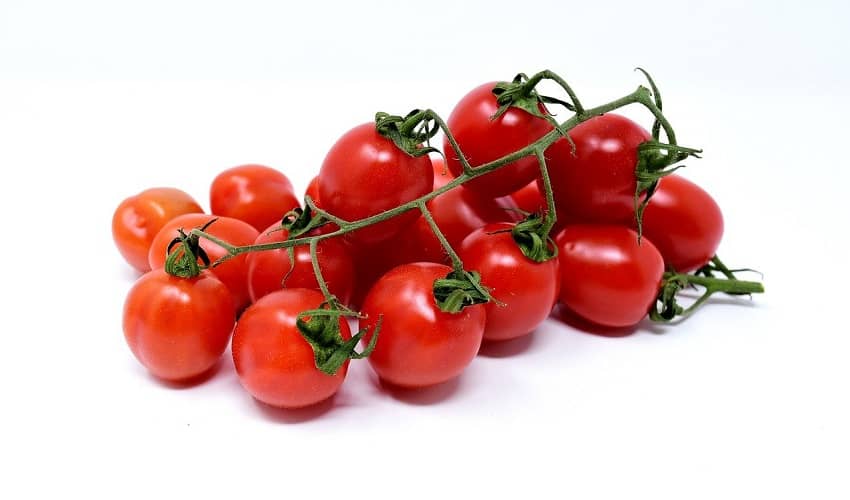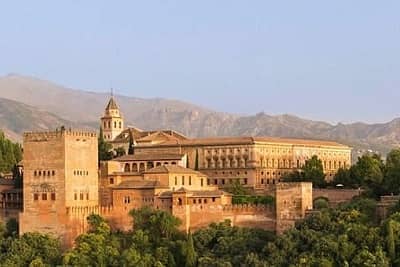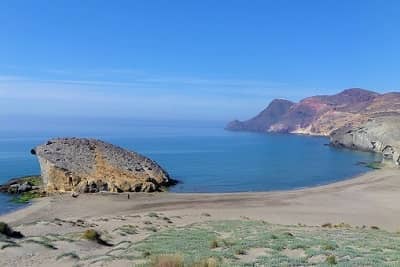The Food of Spain: Gazpacho
Andalucia is the most visited region in Spain. As well as its fantastic beaches, the cities of
Seville, Granada and Cordoba have an alluring appeal. It is also the home to the highest mountains on the Iberian peninsular, and is associated with great Spanish traditions like flamenco and tapas dining.
In this article we will be focusing on one of Andalucia's most iconic foods - Gazpacho. Gazpacho is a quintessentially Andalucian dish, which has now become common throughout Spain (and further afield). It is basically a cold tomato soup; however, the quality of the ingredients and the preparation is what really makes the dish stand out. In this article we will look at what exactly makes a good gazpacho.
Gazpacho represents many of the characteristics that define Andalucia. It contains basic ingredients; tomato, cucumber, onion, garlic, pepper, olive oil, vinegar, salt and bread. This reflects the heavily agrarian nature of Andalucian industry; although gazpacho was popular in the developed cities, it is very much a peasant food. It is simple, cheap and made entirely from local produce. The fact that Gazpacho is served cold is also reflective of the hot summers that the region experiences. It is a very refreshing dish, and is at its best when eaten in the open air.
Traditionally, gazpacho has quite a rough texture, with chunks of the vegetables remaining in the soup. Nowadays it is usually a smooth mixture; with chopped up vegetables and croutons added to the soup just before eating. There are many variations, some more accepted in Andalucia than others. In Cordoba, for example, it is common for gazpacho to be served with chopped egg and ham. The town of Rota in the Cadiz region makes a very thick version, with almost no water added.
Modern variations that call themselves 'gazpacho' are made with, for example, melon, avocado and meat. These, however, are basically just cold soups. They can be very tasty, but they generally lack the refreshing zesty taste of gazpacho.
When you visit Spain, particularly Andalucia, make sure that you try gazpacho. Tasting it freshly made in a restaurant or somebody's home is a far cry from the cartons that you can buy in many supermarkets. Sitting on a street in Seville or Granada on a warm day, with a bowl of authentic gazpacho is one of the many sensory delights of the Andalucia region.
If you would like to try gazpacho in Andalucia, we would love to welcome you on one of our cycling holidays in the region. A refreshing bowl of gazpacho, bursting with flavour and nutrition, makes for a great lunch starter after a morning ride.
Check out the links below for details of the holidays that we run in the region, or contact us for more information.
In this article we will be focusing on one of Andalucia's most iconic foods - Gazpacho. Gazpacho is a quintessentially Andalucian dish, which has now become common throughout Spain (and further afield). It is basically a cold tomato soup; however, the quality of the ingredients and the preparation is what really makes the dish stand out. In this article we will look at what exactly makes a good gazpacho.
History
It is thought that the idea of a cold tomato soup was brought to Andalucia during either the Moorish or Roman control of the region. The Andalucians, particularly those from Seville and Cordoba, then adapted the recipe into what is known today as Gazpacho.Gazpacho represents many of the characteristics that define Andalucia. It contains basic ingredients; tomato, cucumber, onion, garlic, pepper, olive oil, vinegar, salt and bread. This reflects the heavily agrarian nature of Andalucian industry; although gazpacho was popular in the developed cities, it is very much a peasant food. It is simple, cheap and made entirely from local produce. The fact that Gazpacho is served cold is also reflective of the hot summers that the region experiences. It is a very refreshing dish, and is at its best when eaten in the open air.
Preparation
The preparation of gazpacho is simple; the fruit vegetables are peeled, chopped, de-seeded and then mixed together (traditionally in a pestle and mortae pictirer, but more recently in a blender). Water, olive oil, vinegar and salt are then added to reach the desired consistency (bread can also be used to thicken the mixture), the soup is then chilled before serving.Traditionally, gazpacho has quite a rough texture, with chunks of the vegetables remaining in the soup. Nowadays it is usually a smooth mixture; with chopped up vegetables and croutons added to the soup just before eating. There are many variations, some more accepted in Andalucia than others. In Cordoba, for example, it is common for gazpacho to be served with chopped egg and ham. The town of Rota in the Cadiz region makes a very thick version, with almost no water added.
Modern variations that call themselves 'gazpacho' are made with, for example, melon, avocado and meat. These, however, are basically just cold soups. They can be very tasty, but they generally lack the refreshing zesty taste of gazpacho.
Key Ingredients
Tomatoes form the base of gazpacho and impart the strongest flavour. The tomatoes must be fresh and very ripe (Note: The tomatoes in the above picture are not ripe enough!). You should be able to squeeze them easily with your fingers and the flesh should be close to becoming mushy. The other important factor in the taste is the olive oil. Gazpacho is transformed from pureed vegetables into a culinary delight when good quality extra virgin olive oil is added.When you visit Spain, particularly Andalucia, make sure that you try gazpacho. Tasting it freshly made in a restaurant or somebody's home is a far cry from the cartons that you can buy in many supermarkets. Sitting on a street in Seville or Granada on a warm day, with a bowl of authentic gazpacho is one of the many sensory delights of the Andalucia region.
If you would like to try gazpacho in Andalucia, we would love to welcome you on one of our cycling holidays in the region. A refreshing bowl of gazpacho, bursting with flavour and nutrition, makes for a great lunch starter after a morning ride.
Check out the links below for details of the holidays that we run in the region, or contact us for more information.




 Spain
Spain


